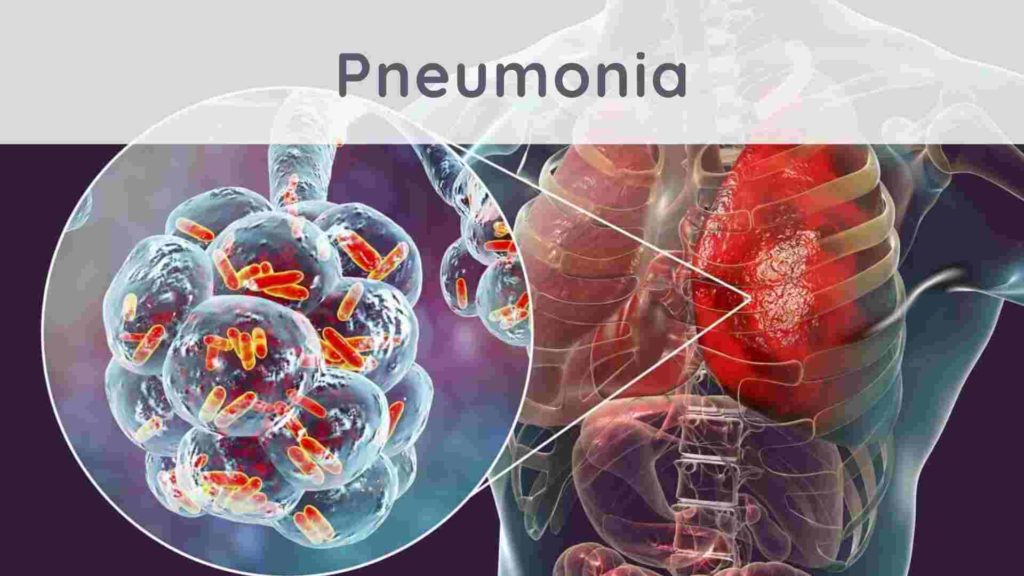Pneumonia: how to treat it naturally?
Written by: Loris Vitry (holistic coach)
Validated by: Cathy Maillot (Osteopath)
Caution: If you have any medical questions or concerns, please speak to your doctor. Even if the articles on this site are based on scientific studies, they do not replace professional medical advice, diagnosis or treatment.

Pneumonia is a condition of the lower respiratory tract.
It is caused by inflammation of the alveoli in one or both lungs.
It is a disease that mainly affects infants, children, and the elderly.
Pneumonia is accompanied in most cases by fever, cough, chills, but especially breathing difficulties.
It can be a significant cause of stress.
Its evolution fills the pulmonary alveoli with pus, which means that it can be fatal and requires specific treatment.
What are the natural solutions to deal with pneumonia?
We are giving you insights in this article.
The use of essential oils
Essential oils are known for their effectiveness in many treatments.
They are also involved in the relief of pneumonia.
Indeed, thanks to their 1,8-cineole content, they present advantages for cleaning the lungs.
They are potent bactericides capable of fighting the symptoms of pneumonia.
However, it is not just any oil.
We recommend you:
- Pine essential oil;
- Laurel essential oil;
- Ajowan essential oil;
- Inule essential oil;
- and Nigella essential oil.
The first two are favorable for inhalation.
To do this, pour a few drops of one of the two oils to a bowl of hot water.
Then place your head over the bowl and uncover the head with a towel.
Inhale the steam for about 10 minutes two to three times a day for two weeks.
The other oils are more favorable for massage.
Make a mixture of all these oils in a bottle, then shake it to create the synergy.
Afterward, you will apply 6 to 8 drops of the solution on your chest for the massage.
The massage can be performed 4 to 6 times a day for two weeks.
The garlic and ginger treatment
Garlic and ginger are two common and very effective remedies for treating infections.
Garlic is an excellent ally for the treatment of pneumonia.
Not only does it purify the respiratory tract, but it is also involved in the elimination of pneumococcus, which is the bacteria responsible for pneumonia.
The bactericide property is imparted to garlic by the allicin it contains.
We, therefore, advise you to consume 4 to 6 pods per day until you feel better.
You can eat it raw or add it to your meals.
Regarding ginger, it is an alternative to garlic.
It is known for its antiviral properties.
It liquefies mucus and accelerates the recovery process.
Ginger is also consumable in meals, in the form of tea or fruit juice.
Tea remains a better option and to make it:
- peel a piece of ginger 2 or 3 cm in size;
- put it into a cup;
- heat water, pour it into the cup;
- and let it steep for about fifteen minutes.
Your tea is ready, and you can drink it slowly.
Drink it 3 to 4 times a day until recovery.
Consumption of ginger in the form of tea has no side effects.
It can, therefore, be consumed by children as well as by pregnant women.
The clay poultice
Old grandmother’s recipe, the clay poultice, remains a simple and very effective natural remedy.
It is a classic recognized for the treatment of infections.
Its preparation is done as follows.
- Mix clay with cold water until you get a paste.
- Add a few drops of vinegar.
- Spread the mixture on a gauze.
- Fold the gauze over and apply it to the chest.
- Cover the area with a cotton cloth.
- Then leave on for half an hour to an hour.
You will only remove the poultice after the clay has completely dried.
Also, we recommend a hot poultice.
It is ideal for regenerating and revitalizing organs.
However, its use requires some precautions.
- No contact with metal.
- Do not use tap water, rather spring water.
- Do not keep the clay after use.
We suggest adding a few drops of essential oil to your poultice, for even more effect.
Herbal tea infusion
For a long time, plants have been the first remedies to treat all types of diseases.
Despite the advent of modern medicine, they are still recognized as a possible method to diminish the symptoms of pneumonia.
Horseradish is the most recommended herb for helping in the treatment of pneumonia,
It is ideal for the treatment of pulmonary and respiratory affections.
Its use consists of consuming it under the form of herbal tea.
Soak 15 to 30 g of this plant in warm water and drink two to three cups a day.
It is a useful aid to accompany the recovery of the children suffering from pneumonia.
Eat lots of strawberries, guava and tomatoes
Here are three fruits that we all know and love.
Strawberries, guavas, and tomatoes are foods rich in Vitamin C.
These strengthen the body’s defenses and help fight viral and bacterial infections.
Like garlic, these fruits are also involved in the elimination of pneumococcus.
If you can find these fruits, you can opt for the carrot.
Carrot is rich in Vitamins A, and it is very beneficial for cleaning the lungs.
Many nutritionists also recommend it.
You have the choice of consuming it raw or making it a juice.
Take a bath regularly
If pneumonia causes breathing difficulties, a bath can help you attenuate this symptom.
A lukewarm bath will be useful to facilitate breathing.
You can add an infusion of:
- sage;
- thyme;
- pine buds;
- or eucalyptus.
Even better, you can do a few minutes of physical exercise before taking your bath; thus, you stimulate the immune system faster.
In short, pneumonia is a condition that goes far beyond a simple cold.
It is a disease that affects the lungs and, therefore, the respiratory tract.
Its causes and symptoms are many.
However, the aids presented above are the best to help you speed up the recovery.
However, it is essential to respect the dosages and precautions prescribed.
Continue reading:
Dry skin: how to moisturize it naturally?

